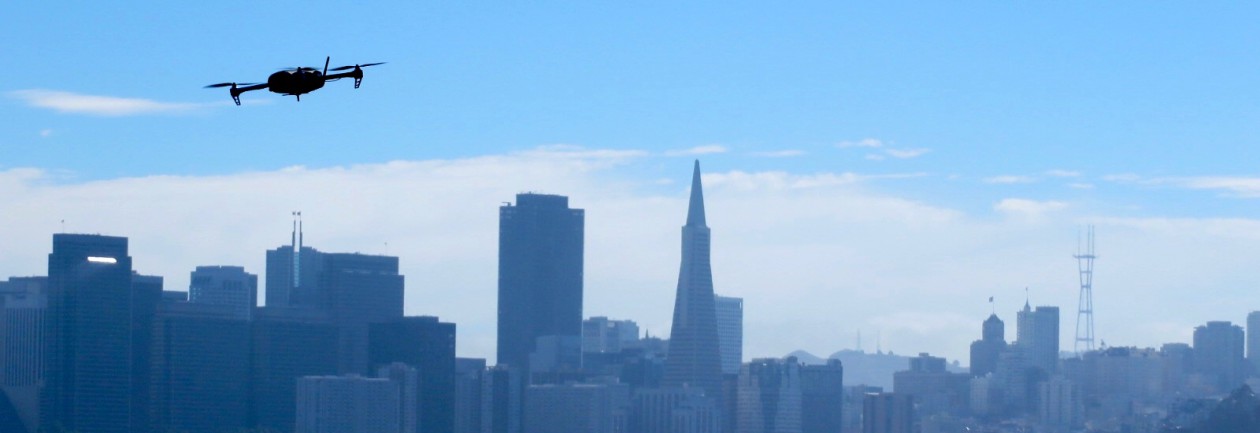 Almost daily, I get asked “are drones illegal?” Short answer – No. The technology is obviously moving at a breakneck pace, applications are abundant and continue to grow, and the potential for big business in the United States is evident. Manufacturing start-up firms are popping up all over the country and have every legal right to make and sell as many UAS to as many customers as they please.
Almost daily, I get asked “are drones illegal?” Short answer – No. The technology is obviously moving at a breakneck pace, applications are abundant and continue to grow, and the potential for big business in the United States is evident. Manufacturing start-up firms are popping up all over the country and have every legal right to make and sell as many UAS to as many customers as they please.
As of today, I would define the Federal Aviation Administration’s (FAA) current policies/regulations for UAS as muddled and directionless. The only certainty is that UAS are not allowed for commercial purposes under any circumstance. The FAA’s UAS frequent questions website clearly defines this:
Q: “Can I fly a UAS under a COA or experimental certificate for commercial purposes?” A: “No. Currently, there are no means to obtain an authorization for commercial UAS operations in the National Air Space (NAS).”There are three basic categories of UAS operates defined by the FAA and how they can operate a UAS:
- Public entities such as local governments, police departments, universities, etc. Public aircraft must obtain a Certificates of Waiver or Authorization (COA) from the FAA for approval to operate. This is a lengthy/drawn out process that takes months to materialize. In 2012, the number of COAs requested was 257. By the end of February 2013, 327 COAs had been requested in just 2 months.
- Civil operators and private industry. Civilian operators do not have to obtain a COA. They do, however, need approval to operate by obtaining a Special Airworthiness Certificate (SAC) from the FAA. I had an email conversation with Thomas Rampulla, the FAA’s legality specialist, about the necessary steps for SAC obtainment. Although all 11 steps are rather cumbersome, they are achievable with effort. The one step that stands out though, is the necessary requirement of “being a certified pilot regardless of aircraft size or operating altitude.” This is a great barrier since 99.9% of people interested in operating UAS are not certified pilots. Furthermore, I stated to Mr. Rampulla that the aircraft I wanted to operate weighed less than 3 lbs and posed little to no danger to the public. He balked at my statement, said it didn’t matter, and said that I needed to be a certified pilot no matter what. Needless to say, this was a very frustrating conversation.
- Hobbyist make up the third category of UAS operators. Any person operating a UAS for recreation or sport falls into the hobbyist category. Hobbyist are to abide by the 1981 document AC 91-57. Hobbyists are exempt from any certification or approval from the FAA and AC 91-57 is their only authority. Basic standards of AC 91-57 are: operation away from populated areas, maximum flying height of 400 ft above ground level, remain within line-of-sight, vehicle must be <55 bls.
To sum things up, it is very difficult to get proper clearance from the FAA if you want to fly for any reason other than recreational use. My initial reason for contacting Mr. Rampulla was to inquire about using my IRIS for an R&D at Towill. I was quickly shot-down by him with little to no explanation as to why a 3 lb UAS needed a certified pilot for R&D but not for hobby use. As I’ve come to learn, most UAS operators scoff at the FAA and its inability to write sensible legislation. This leaves most UAS operates in a middle limbo-zone where they fly small UAS (sUAS) under hobbyist guidelines, but are doing work and research far beyond anything that would be considered recreational. At the same time, the FAA would have a hard time prosecuting these folks because they ultimately could come back and tell a judge that they are flying for the “fun of it.” In this 2007 document, the FAA acknowledged the necessity of having another class of UAS operators who would fall into this limbo category. Seven years later, nevertheless, UAS technology has exploded at a momentous rate, and the FAA has done absolutely nothing.
Everything is supposed to change in September 2015 when the FAA is mandated to have it’s UAS rule-book completed. Hopefully. There have been numerous delays to progress already, however, even though the FAA has acknowledged the problem. For the sake of this multi-billion dollar industry, let’s pray they get it together by 09/15.
